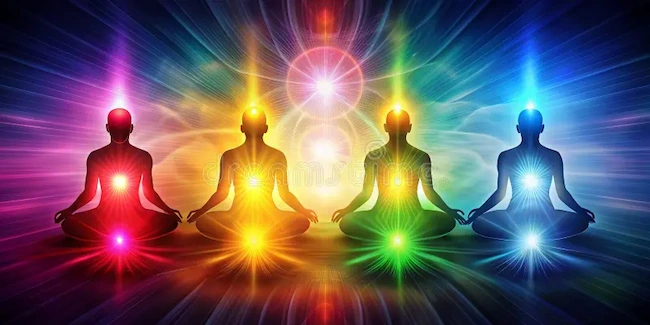
The choice between surrendering to the world or maintaining one’s integrity represents not merely a practical dilemma but a profound existential crossroads that has captivated philosophers, spiritual teachers, and seekers throughout human history. This tension—between adaptation and authenticity, between external harmony and internal truth—lies at the heart of the human condition itself. In exploring this ancient yet ever-present tension, we may discover not only how to navigate our immediate circumstances but also how to approach the deeper mystery of our existence.
The Nature of Surrender: Beyond Passivity
True surrender transcends mere capitulation to external forces. In its deeper sense, surrender represents a conscious relationship with reality rather than blind acceptance of convention. The Taoist concept of wu-wei (non-action) illuminates this distinction—suggesting not passivity but rather a flowing alignment with the natural currents of existence.
The Hidden Wisdom in Surrender
- Liberation from Ego-Attachment: Spiritual traditions worldwide recognize that surrendering one’s rigid self-conception can paradoxically lead to greater freedom. As the Sufi poet Rumi observed, “When I let go of what I am, I become what I might be.”
- Participatory Consciousness: Surrender allows for a shift from oppositional thinking to participatory awareness. When we cease battling against “what is,” we may discover a more profound connection to the interconnected web of life, experiencing what philosopher Martin Buber called the “I-Thou” relationship with reality.
- Alchemical Transformation: By surrendering resistance to difficult experiences, we allow them to transform us. As Carl Jung noted, “What you resist, persists”—suggesting that genuine growth often requires a form of yielding that allows integration rather than rejection of life’s challenges.
The Shadow Side of Surrender
However, surrender contains its own unique perils:
- Spiritual Bypassing: Under the guise of acceptance or non-attachment, we may engage in what psychologist John Welwood termed “spiritual bypassing”—using spiritual ideas to avoid confronting necessary conflicts or addressing genuine injuries.
- Collective Complacency: History demonstrates how uncritical acceptance of cultural narratives can enable systemic injustice. As Hannah Arendt explored in her analysis of the “banality of evil,” seemingly innocuous conformity can facilitate profound moral compromise.
- Self-Alienation: Perhaps most significantly, surrendering core values for external approval can lead to what existentialist philosophers called “bad faith”—a fundamental self-betrayal that undermines authentic living.
Integrity: Standing in Truth
Integrity derives from the Latin integer, meaning “whole” or “complete.” To maintain integrity is not merely to follow abstract principles but to preserve the wholeness of one’s being—to live in alignment with one’s deepest understanding of truth.
The Transcendent Power of Integrity
- Existential Authenticity: As Søren Kierkegaard proposed, authentic existence requires “standing naked before God”—maintaining internal coherence even when this places one at odds with social convention. This courage to face one’s truth constitutes what philosopher Paul Tillich called “the courage to be.”
- Bearing Witness: By steadfastly embodying truth even when inconvenient, individuals create what Václav Havel called “the power of the powerless”—the transformative potential of living in truth amidst systems that privilege expediency over authenticity.
- Sacred Responsibility: Many wisdom traditions suggest that integrity represents not merely a personal choice but a sacred obligation. As the Bhagavad Gita teaches, “It is better to live your own destiny imperfectly than to live an imitation of somebody else’s life with perfection.”
The Trials of Integrity
Yet maintaining integrity entails profound challenges:
- The Burden of Perception: Those who maintain integrity in challenging circumstances often face misunderstanding or even vilification, requiring what philosopher Martha Nussbaum calls “the fragility of goodness”—the willingness to be vulnerable for truth’s sake.
- Interior Struggle: The path of integrity involves confronting one’s own contradictions and shadow elements. As Aleksandr Solzhenitsyn observed, “The line dividing good and evil cuts through the heart of every human being.”
- The Question of Effectiveness: Standing firmly for truth raises practical questions about impact versus purity. As Reinhold Niebuhr noted in his exploration of moral complexity, sometimes “perfect justice is not realizable” and we must navigate the tension between ideal principles and pragmatic engagement.
Beyond the Binary: The Integrated Path
The deeper wisdom in navigating this tension lies not in choosing either surrender or resistance as fixed positions, but in developing what philosopher Ken Wilber calls “integral consciousness”—the capacity to discern when each response serves truth in its fullest sense.
Contemplative Discernment
Developing this discernment requires:
- Deep Listening: Regular practices of silence and contemplation that allow us to distinguish between ego-based reactivity and soul-level knowing.
- Examining Motivation: Honestly investigating whether our inclination to fight or yield emerges from authentic values or from fear, pride, or habit.
- Accepting Paradox: Embracing what Zen tradition calls “not-knowing mind”—the willingness to hold contradictory truths simultaneously.
Embodied Wisdom
This discernment must be lived through:
- Courageous Flexibility: Developing what Aristotle termed “practical wisdom” (phronesis)—the capacity to respond appropriately to each unique situation.
- Bearing Witness: Maintaining presence even within discomfort, cultivating what Buddhist teacher Pema Chödrön calls “the wisdom of no escape.”
- Sacred Engagement: Finding ways to participate in the world that honor both inner truth and the complexity of communal life.
The Middle Way
Ancient wisdom traditions point toward integration:
- The Buddhist concept of the Middle Way suggests navigating between rigid extremes.
- The Taoist principle of yin-yang balance reminds us that apparent opposites interpenetrate and complement each other.
- Indigenous wisdom traditions emphasize relational consciousness that transcends individual-versus-collective dichotomies.
Practical Wisdom for Everyday Dilemmas
How might this deeper understanding manifest in daily life?
Questions for Self-Inquiry
When facing the tension between surrender and integrity, consider:
- What truth am I being called to honor in this situation?
- If I surrender here, is it from wisdom or from fear?
- If I resist here, is it from clarity or from ego?
- What would integrity look like if it included both strength and suppleness?
Practices for Integration
- Contemplative Pause: Before reacting, create space for deeper knowing to emerge.
- Values Clarification: Regularly revisit and refine your understanding of core values.
- Community of Truth: Cultivate relationships with others committed to authentic living who can mirror both your courage and your blind spots.
Conclusion: The Dance of Being
The tension between surrender and integrity reveals itself not as a problem to solve but as a mystery to inhabit. Perhaps the wisest response lies in embracing what philosopher Maurice Merleau-Ponty called “the paradox of transcendence and immanence”—the understanding that human existence inherently involves both participation in the world and the capacity to stand distinct within it.
By approaching this tension with reverence rather than resolution, we open ourselves to a more nuanced way of being—one that honors both the wisdom of yielding and the necessity of standing firm. In this integration, we discover not a compromise between opposing forces but the possibility of wholeness that transcends duality.
As we navigate our individual paths between surrender and integrity, perhaps we are participating in humanity’s larger evolutionary journey—learning to embody both profound connection with all that is and the unique truth that each of us is called to manifest. In this sacred dance between belonging and becoming, we may discover what it truly means to be human.
IS THIS YOUR FIRST INCARNATION ON EARTH?
Some souls are strongly connected to Planet Earth and seem to reincarnate over and over again. On the other hand, there are other few souls who feel uncomfortable inhabiting a material body. These latter souls are not aligned with the earthly world and feel as if they do not belong to humankind. They feel deeply homesick, indicating a connection to a spiritual kingdom beyond this material plane. They are making their first and possibly their last visit to Earth. Are you among them?
Read the following sentences and choose the ones that best represent your thoughts.
Count the total number of selected boxes and check the related profile.
0-1: You belong to this world and will come back again
2-3: You have been here before but have visited other worlds as well
4-5: You may have been here before, but you will soon leave
6: You are here for the first and last time
Further details on reincarnating





